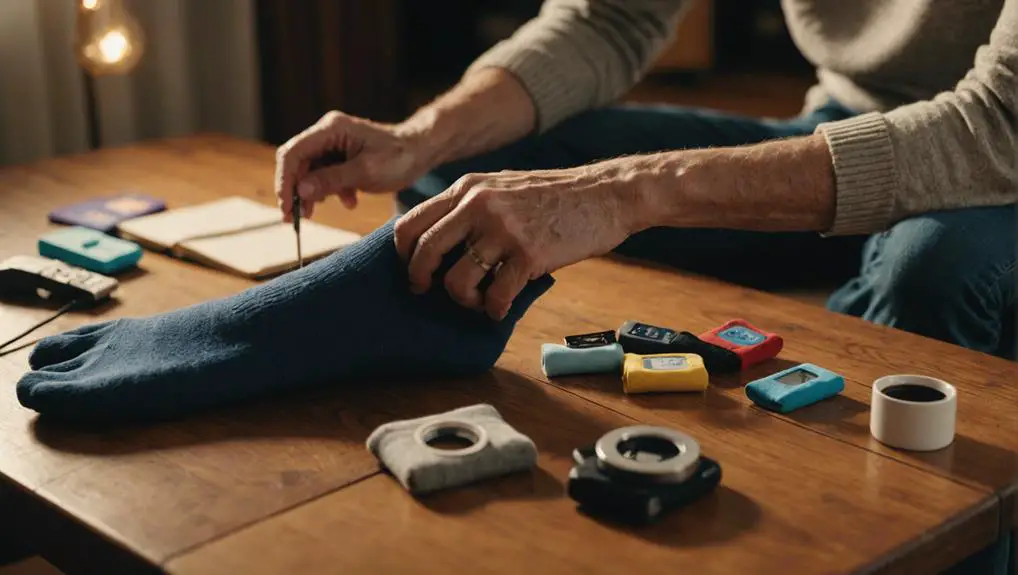When it comes to hearing impairment or, in other words, deafness, many people around the world question whether they will be able to hear again or not.

They always live in the hope that maybe there is some miraculous invention that can help them regain their hearing abilities.
Another post that will interest you is about How Come Deaf People Can’t Speak?
So can deaf people hear again? Medically speaking if a person is completely deaf since birth then he can only hear through lip-sync or sign language.
On the other hand, if a person is partially deaf then they are different treatments to regain hearing.
Table of Contents
Can A Deaf Person Hear Again? What Is Complete Or Partial Deafness?
Let’s categorize them into two broad categories: those who are deaf at birth and those who have partial hearing loss.
Here we have explained all the facts you need to know to understand how deafness works and whether it is curable.
Deaf at Birth
People who are completely deaf can hear nothing at all and are dependent on lip sync. These people use the power of their sight and hand gestures to communicate.
Many of them are reliant on sign language. The reason is that they are unable to detect sound waves at all; they cannot understand speech signals around them even when the sound is amplified.
Partially Deaf

Partial deafness can be caused by many factors such as accumulation of ear wax, infection, blockage, fluid imbalance of abnormal skin growth. People who are partially deaf can only detect a few sounds. However, they are not entirely deaf.
Moreover, partial deafness is curable, and many people use hearing aids or go through surgeries to treat it.
How Does The Hearing Mechanism Work?
To understand deafness better, it’s important to know how the hearing mechanism works.
Following are the steps to understand how the hearing mechanism in the human body.
- Firstly, sound waves have produced that travel through air and fall on our outer ear to enter the auditory canal.
- An auditory canal is a long passage connected to the eardrum. When the sound hits the air drum, it vibrates.
- The vibrations are then passed on to the ossicles. It is the inner ear part where we can find three connected bones in a row.
- These ossicles capture the vibrations and then amplify them.
- The signal is then sent to small hair-like structures found in the cochlea, which move when the vibrations hit them.
- The auditory nerves pick the data and send it to the brain through these movements, which process it, and the sound is then interpreted.
When it comes to deaf people there is some trouble with the auditory nerve. The sound waves have a difficult time having an interpretation by the brain and that is how the hearing loss occurs.
Stages of Deafness
A deaf person can go through different stages or levels of deafness depending on the kind of hearing impairment the individual is experiencing. Sometimes a person is only mildly deaf and can’t detect sounds between 25 decibels to 29 decibels. Such people find it difficult to understand what the other person is saying, especially when in a noisy, crowded place.

Similarly, if an individual is moderately deaf, he will be able to detect sounds between 40 to 69 decibels. Such people need a hearing aid to assist them in hearing.
Likewise, if a person is severely deaf, he cannot hear sounds that are below 90 decibels. They use lip-reading or sign language to understand the world around them.
A Cure? Let’s Find out:
Following are some methods and ways through which hearing loss can be cured.
- Hearing Aids:
These are wearables that assist in hearing. They are usually available in different medical stores or clinics. But before using them, you need to go to your doctor to follow his recommendations.
These devices do not cure hearing. But instead, they help amplify the surrounding sounds that enter the ear. Such devices are easy to operate and usually consist of a battery, loudspeaker, or microphone. They are also customizable and readily available in many sizes.
- Cochlear Implants
A cochlear implant is only recommended for people whose air drum and middle ear function correctly. A tiny microprocessor is attached behind the ear, and an electrical current is passed through a thin electrode into the cochlea, which stimulates electricity and helps in hearing.
The process works when the microphone collects sound and supplies it to the speech processor, which then channels the signals into a transmitter.
Furthermore, a cochlear implant can also be done internally in the presence of experts and surgeons. A simulator is inserted beneath the skin, and with the help of internal wires, electrical signals are sent to the electrodes.
A maximum of 22 electrodes are attached to the cochlea, which then functions by sending signals directly to the brain. It primarily works by changing sound waves into electrical signals.
If there are slight chances of hearing with the help of hearing aids, then a cochlear implant is not recommended.
- Gene Therapy
It is pretty new and innovative research in science as it works on the criteria of inserting a harmless and essential gene, Atoh1.
The gene triggers the ear’s sensory receptors and causes them to regrow. The experiment was firstly done on mice in a lab like many other experiments. However, it proved to be a significant success. It is still under research, yet many people consider themselves candidates for this therapy.
- Auditory Training and Rehab
Mild hearing loss can also be treated through training and rehab. There are many smartphone apps, auditory books, and listening exercises online that can help the brain re-learn how to process and reprocess sound signals.
- ALDs
Assistive listening devices can also help in improving the hearing experience. Music, television, radio, amplified phones, listening loops, and telecoils can make a difference in hearing clearly.
Conclusion
People are born with different uniqueness and being deaf is being unique. With the help of different treatments or methods, even deaf people can hear and interpret sounds.

Hi, my name is Eddie, I am a professional trainer specializing in the elderly population and I’m also a website designer. I love training in the gym, going to the beach, traveling, and having good food.
I combined my love for sport and website designing to make “DisabilitEase” whose purpose is to help elderly and disabled people live a more full and active life, have more fun, and enjoy their unique journey despite any disability.


